Nassella Tussock (RPMP 2018)

Why is Nassella Tussock a pest?
Nassella Tussock is an invasive plant. It is able to quickly spread and dominate pastures. The Tussock is also unpalatable to stock. Nassella has a high reproduction capability with 120,000 seeds being present on one mature plant. The plant tolerates a wide variety of environmental conditions but it thrives in sunny, dry hill country so has the potential to cover the majority of pastoral land in Marlborough.
Below is a video from the 1960's showing Nassella Tussock. Video courtesy of Environment Canterbury.

Nassella Tussock on road side
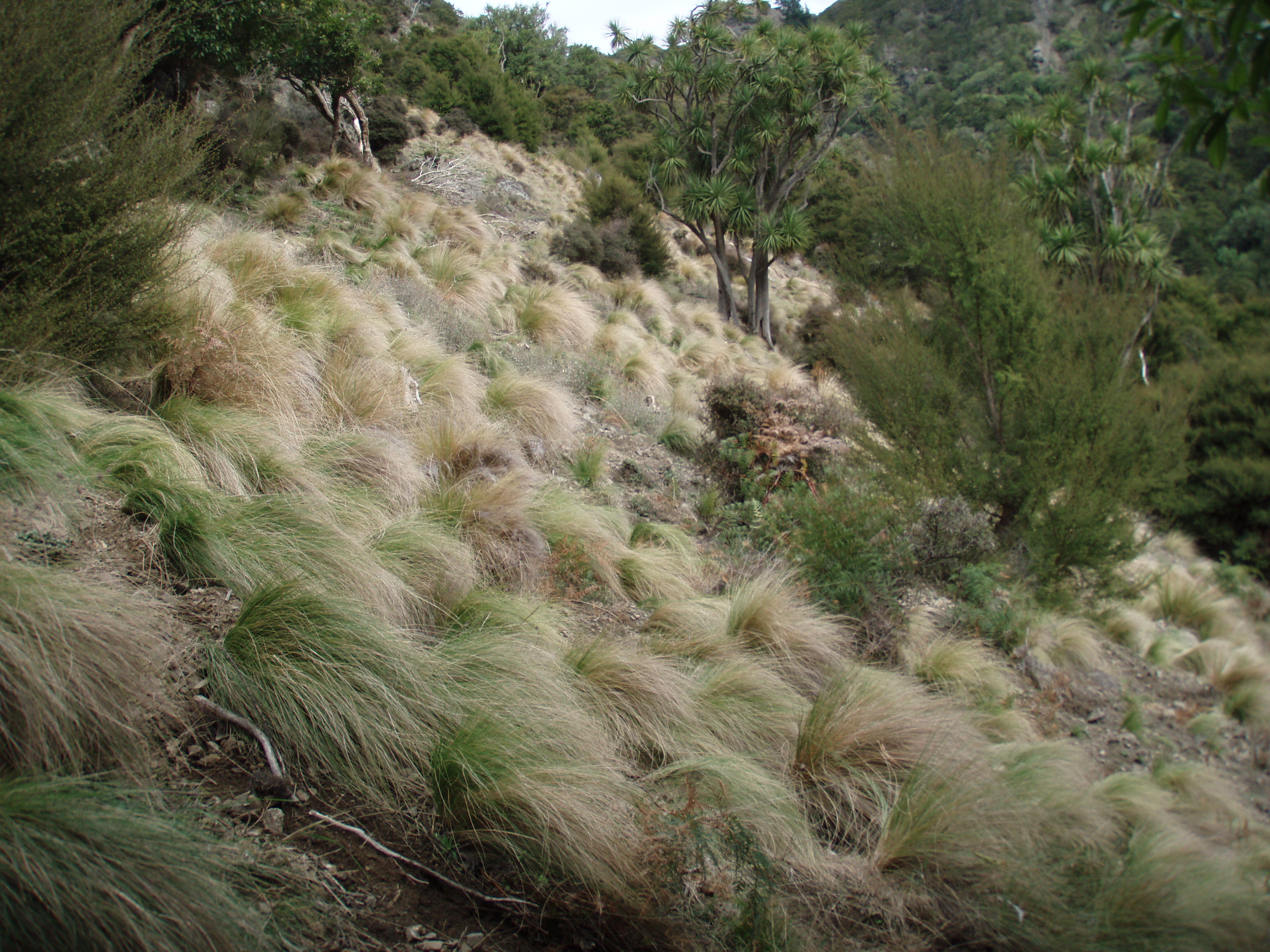
Nassella Tussock is able to dominate areas quickly and is not palatable to stock
Where can you find Nassella Tussock?
Nassella Tussock is present in the majority of dry pastoral areas of Marlborough, including Wither Hills, Dashwood, Awatere area, Ward area, and patches through the Wairau Valley/Waihopai area. Nassella is well established in some of these areas of Marlborough so the objective is to minimise potential spread issues (and of course reduce where possible) and to stop the plant from increasing in its current regional distribution. Nassella Tussock is also found in the dry east coast regions of North and South Island such as Canterbury and Hawkes Bay. Have a look at the Nassella distribution below using the Council Smart Map System (once in the Biosecurity pest plants map, click on layers' and tick the Nassella Tussock distribution box)
Go to the Smart Map of recorded Nassella Tussock distribution
How do I know it is Nassella Tussock?
Nassella Tussock is a perennial tussock which can look similar to the native Silver Tussock. Nassella has a blue green tinge to the leaf and has blonde leaf tips. The Tussock leaves are rough to touch and the roots form a bulbous root system. Nassella flowers anywhere from October through to December (depending on the season) and it has masses of red/pink seedheads which can look quite distinctive in the landscape.
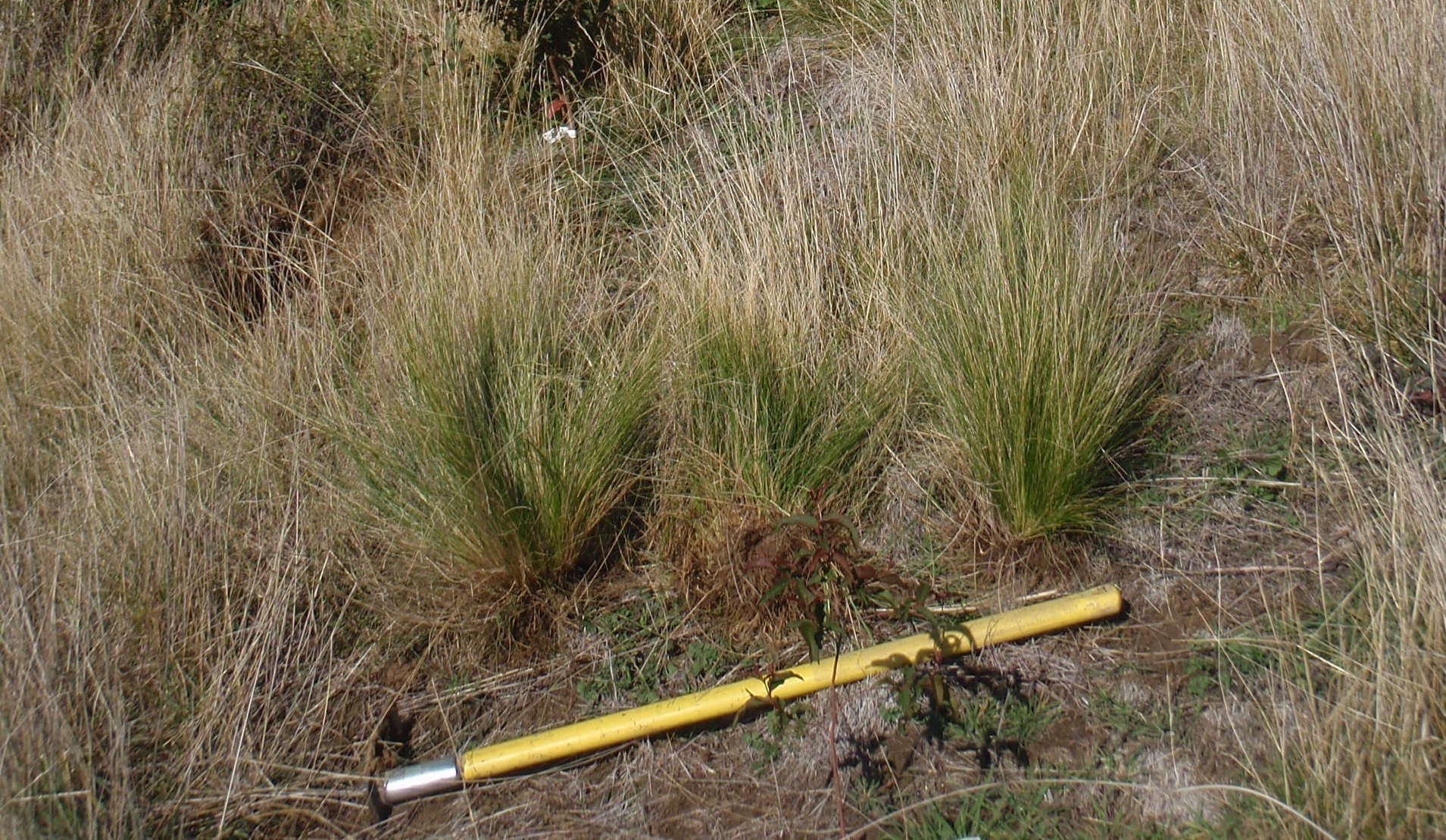
Young 'nest' of Nassella Tussock plants
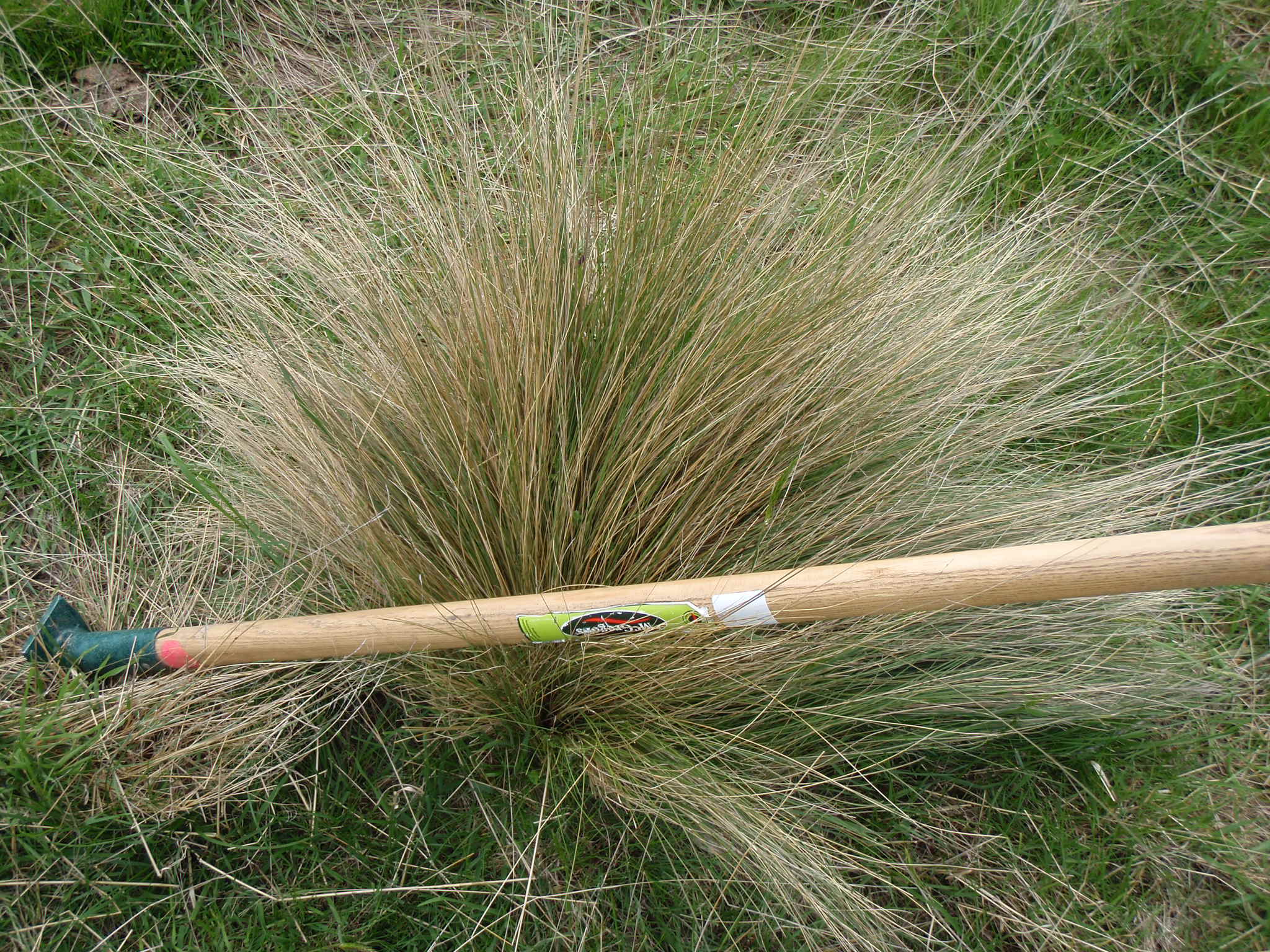
An adult plant when not flowering.
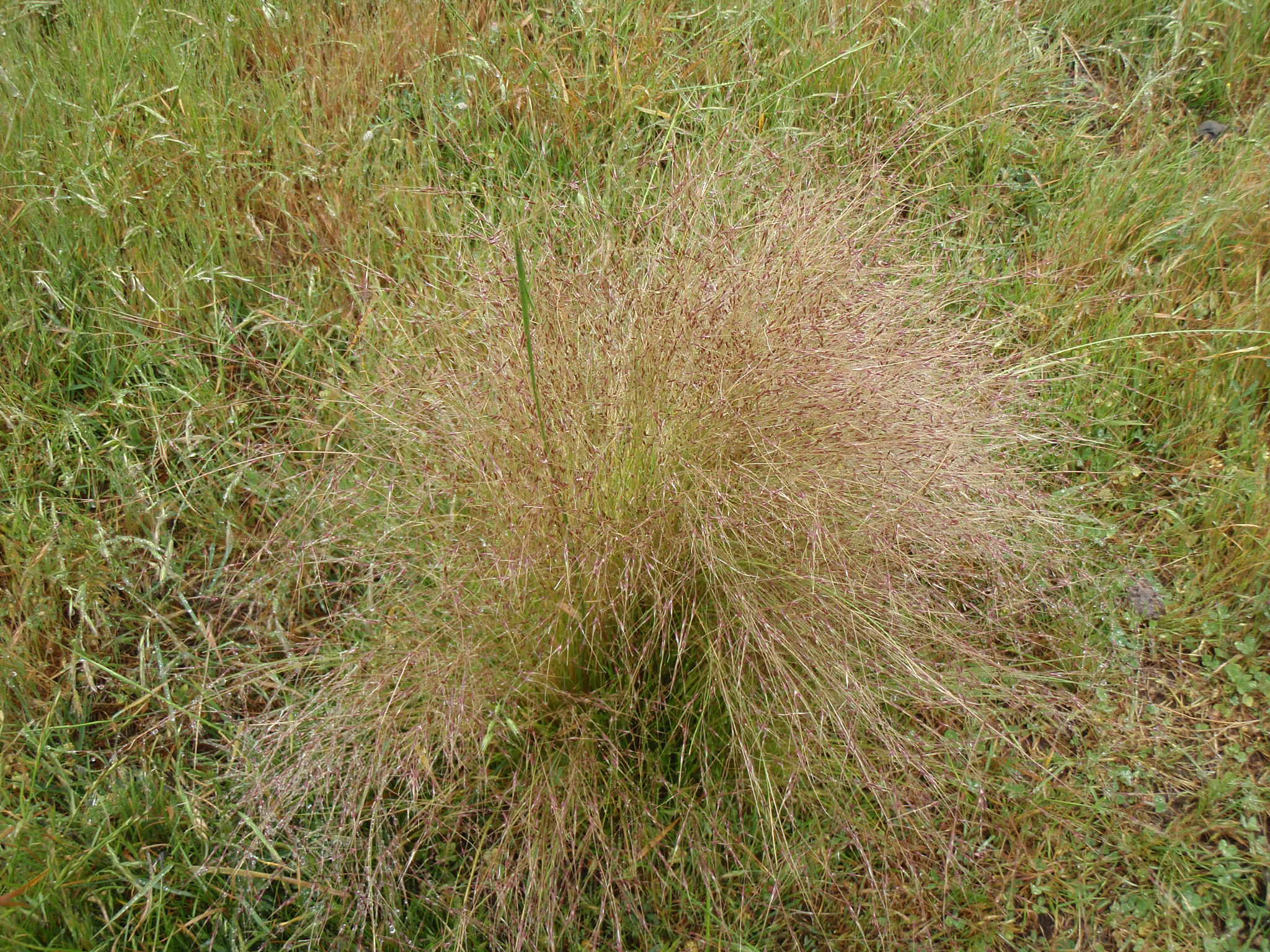
A flowering Tussock
How is it spread?
Nassella is spread by wind. The masses of seedheads on the Nassella plant in summer are very light and easily detached from the plant and even a small breeze can move the seedheads a good distance. Nassella seeds can be spread over 10km or more in strong winds.
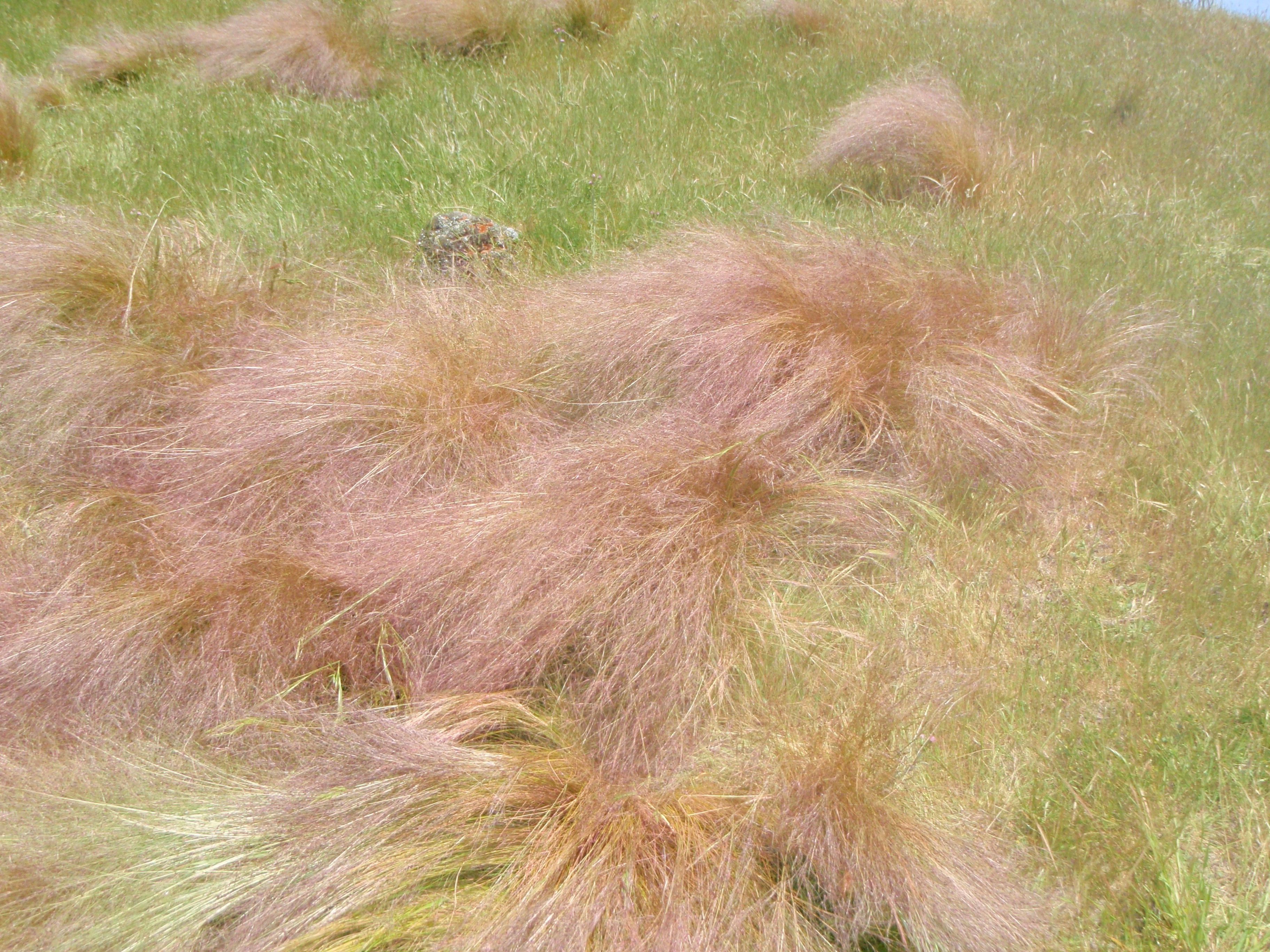
Many flowering Nassella Tussocks
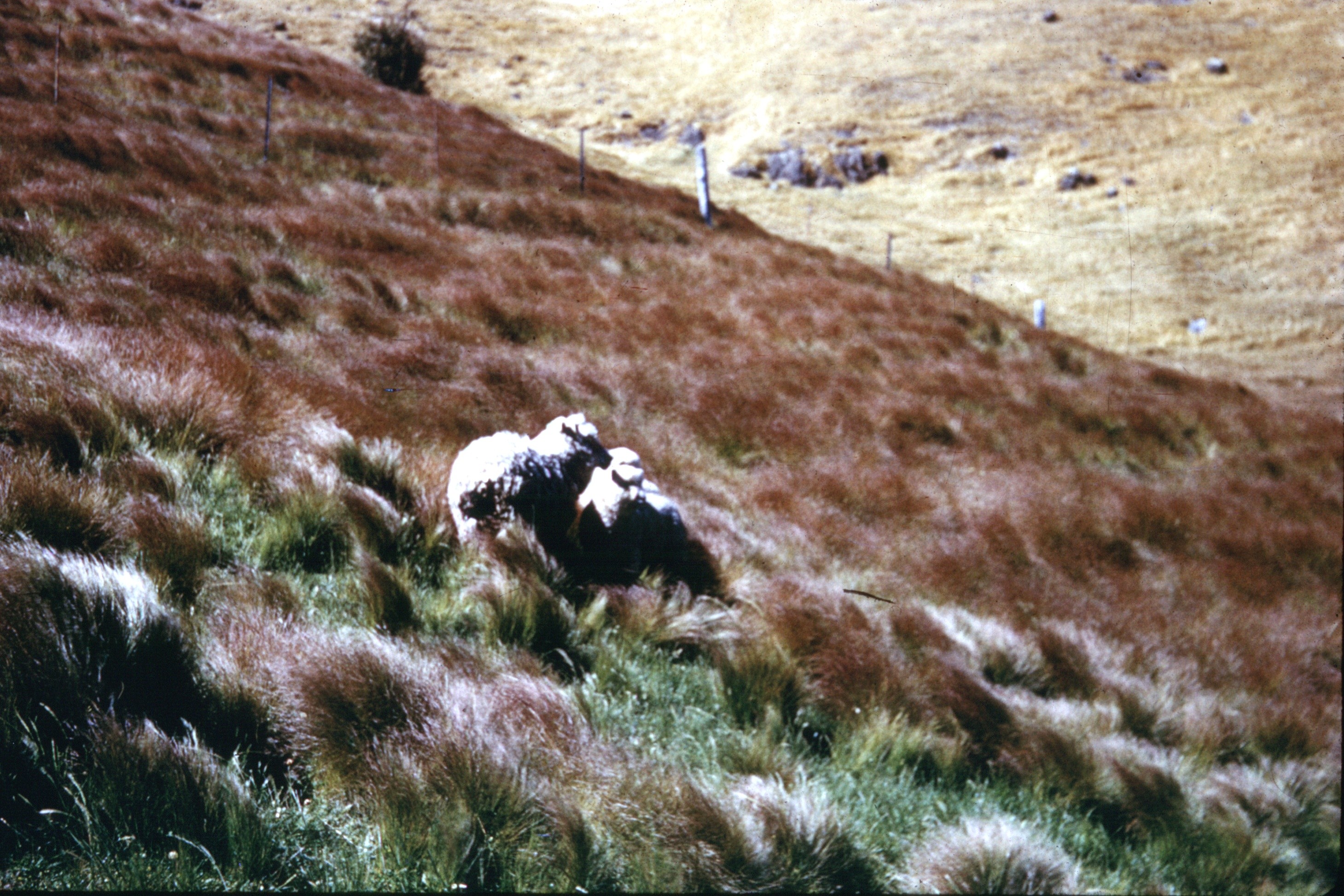
An old photo showing large areas covered in Nassella Tussock
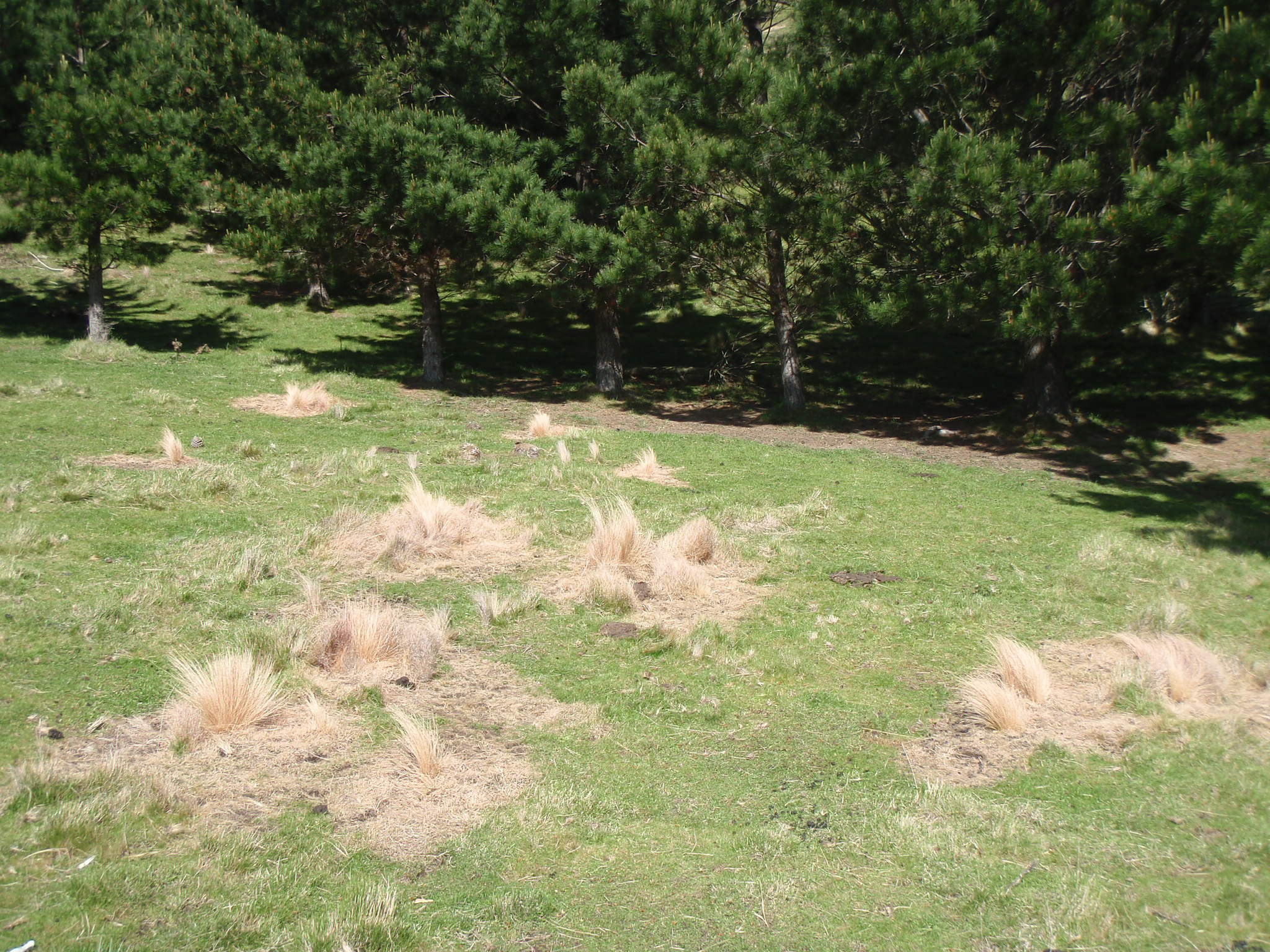
Good work of spraying Nassella Tussock with Taskforce/Glyphosphate herbicide.
How can it be controlled?
There are two main methods of controlling Nassella: Grubbing and spraying with Taskforce herbicide. To stop the wind from picking up the seedheads and spreading the plant further the control work needs to be done prior to October (ie; before it has the potential to seed). Grubbing has been the traditional control tool for many years. Care must be taken to grub out all the root system and not too much soil is left on the grubbed plant. Taskforce has been a relatively new addition to controlling Nassella and is able to effectively control Nassella over large areas (as well as spot spraying) and provide a residue in the soil to prolong the control effect. Below is some more information on Taskforce herbicide.
EPA information sheet: Key rules for using the herbicide Taskforce
There are contractors available to help landholders control their tussock. The PDF below is a list of contractors that are known to work with Nassella Tussock. Note Council gives no warranties with this list of operators and any landholders using contractors need to make their own enquires as to the suitability and quality of the contractor.
See the RPMP programme for Nassella Tussock for details of the rules:
What are the Council regulations for the control of Nassella Tussock?
Because Nassella has significant potential to spread over large areas quickly there is a landholder obligation to annually control all Nassella Tussock on their property before the plant produces seed - this can be anywhere from October through to December.
Council inspect properties from May through to October to ensure that control work has been conducted to minimise further spread of Nassella Tussock through the region.
Due to the sever nature of infestations on some properties, Council can work with occupiers to develop and agree on a Management Plan for their property. This may set out agreed levels and type of control work by the occupier, and the nature of Councils inspections and/or assistance. The underlying bottom line of a management plan for Nassella Tussock will be to ensure the nature of management dos not unduly impact on neighbouring properties.
Other links
See how this programme is tracking
Go to the Weedbusters website for further information, control tips and images

